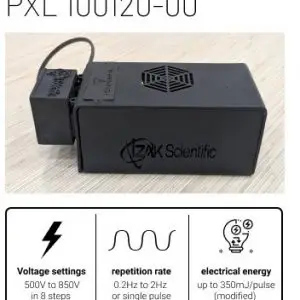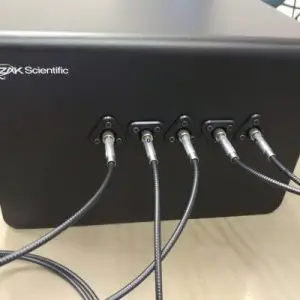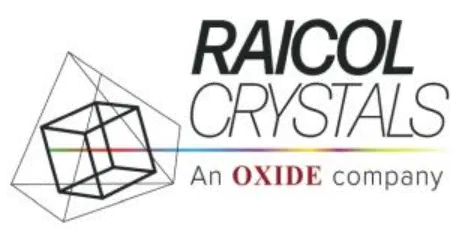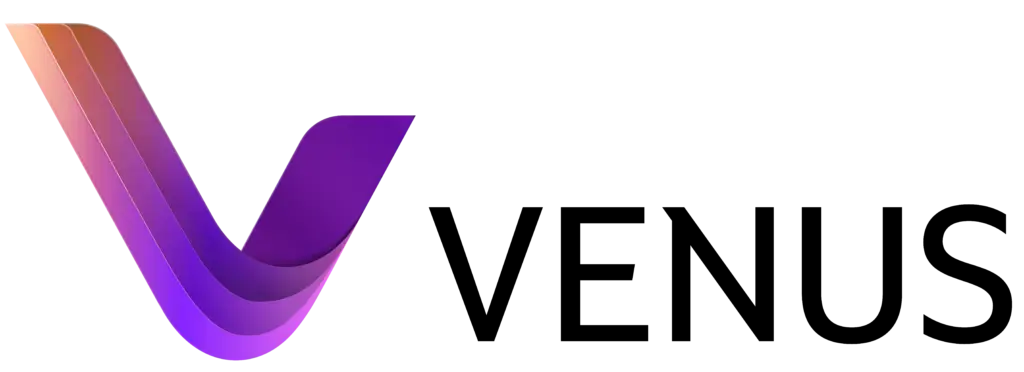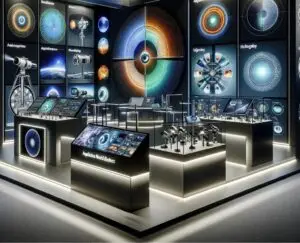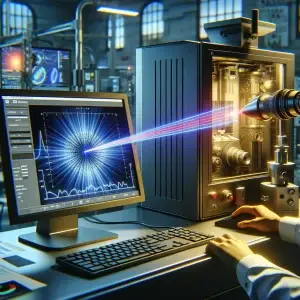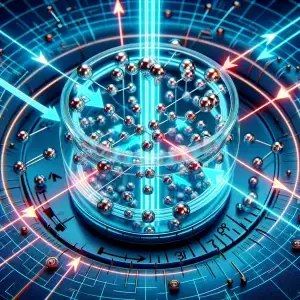Introduction
Photon entanglement is a fascinating quantum phenomenon where two photons become interconnected in such a way that the state of one (regardless of the distance separating them) instantly influences the state of the other. This article delves into the intricacies of photon entanglement, exploring its optical achievement, representation through the Poincaré sphere, measurement techniques, and practical applications in the field of quantum optics.
What is Photon Entanglement?
Photon entanglement refers to a quantum state of two or more photons where they are so deeply linked that the quantum state of each photon cannot be described independently of the state of the others, even when the photons are separated by large distances. This interconnection leads to correlations in their properties (such as polarization) that are stronger than classical physics would allow.
Achieving Optical Entanglement
Optically achieving photon entanglement involves several methods, including spontaneous parametric down-conversion (SPDC) in nonlinear crystals, where a single photon splits into a pair of entangled photons. Another method is using quantum dots and cavity quantum electrodynamics (QED) to generate entangled photon pairs through controlled emission processes.
The Poincaré Sphere and Quantum State Representation
The Poincaré sphere is a geometric representation used to describe the polarization state of light, including entangled photons. Each point on the sphere corresponds to a possible polarization state, providing a comprehensive visual framework for understanding complex quantum states.
Measuring Entangled Photons The measurement of entangled photons often involves quantum state tomography, which reconstructs the quantum state by measuring the polarization state over many pairs of entangled photons. This process includes analyzing the photons’ polarization through various filters and detectors to obtain a complete picture of their quantum state.
Correlation Curves and Quantum State Definition
Correlation curves are critical in defining the quantum state of entangled photons. By measuring the coincidence counts (correlations in detection) as a function of the polarization angle, researchers can infer the quantum state of the entangled pair. These curves provide direct evidence of quantum entanglement and are essential for characterizing the strength and nature of the entanglement.
Correlation Curve Measurement for the Bell State
When performing correlation curve measurements for the Bell state, a specific entangled state, the results showcase the non-classical correlations between the entangled photons. These measurements illustrate the violation of Bell’s inequalities, confirming the quantum mechanical predictions and demonstrating the entangled nature of the photons’ quantum state.
Correlation curves are essential tools for proving photon entanglement, as they illustrate the non-classical correlations between entangled particles beyond what is possible with classical physics alone. Here’s how correlation curves can prove photon entanglement:
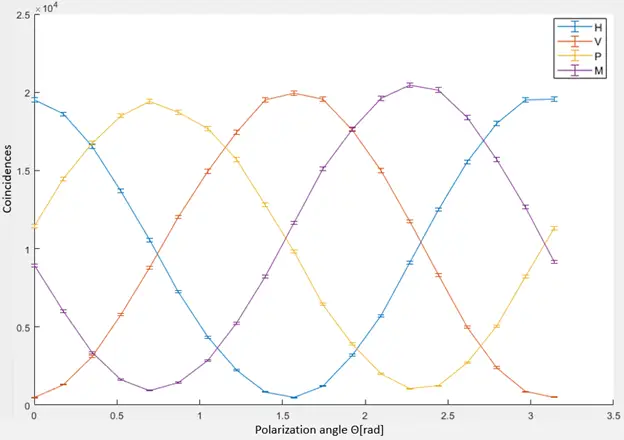
Correlation Curve Measurement of |Φ+>, carried out by Tzachi Sabati
Quantum Correlations Exceed Classical Limits: Correlation curves for entangled photons show correlations that exceed the classical limits defined by Bell’s inequalities. When entangled photons are measured, the correlation curves demonstrate a sine-like dependence on the relative angle between the measurement bases, with visibility that can exceed the classical limit of 0.707. This is direct evidence of quantum entanglement, as such correlations cannot be explained by classical physics (Abouraddy et al., 2001).
Entanglement Through Different Media: Studies have investigated the preservation of photon entanglement in polarization after one entangled photon propagates through various media, such as brain tissue. The Tangle-Entropy (TS) plots, a form of correlation curve, show strong preservation of entanglement, indicating that the non-local correlations between photons are maintained even after interaction with complex biological tissues (Shi et al., 2016).
Quantum Imaging and Communication: In quantum imaging systems using entangled photons, the role of entanglement versus mere correlation is critical. Correlation curves that arise from measuring entangled photons used in imaging systems demonstrate that entanglement, not just correlation, is necessary for achieving distributed quantum imaging, where one photon probes an object while the other serves as a reference. This showcases the unique role of entanglement in enhancing the capabilities of quantum technologies (Abouraddy et al., 2001).
Correlation curves provide a quantitative way to analyze and prove the existence of quantum entanglement between photons. They offer a visual and statistical method to compare quantum predictions with classical limits, thereby confirming the non-local and interconnected nature of entangled states. The patterns observed in these curves, especially when they violate classical bounds or demonstrate unique quantum effects, are compelling evidence of photon entanglement.

Applications of Quantum Optics
Quantum optics, enriched by photon entanglement, has vast applications across various fields. Notably, it plays a crucial role in quantum computing and quantum communication, enabling quantum cryptography protocols like quantum key distribution (QKD). Moreover, it contributes to advances in quantum teleportation, high-precision measurements, and the development of quantum networks.
Quantum entanglement is increasingly utilized in the field of sensing, offering advancements in precision and sensitivity beyond classical limits. Here are several key insights into how quantum entanglement is used in sensing:
Enhancing Quantum Sensing Sensitivity: Entanglement can be used to enhance the sensitivity of quantum sensors. A study demonstrated that a quantum memory can increase sensitivity by retaining the full quantum state even after the coherence decay of the sensor, enabling coherent interaction with weakly coupled nuclear spin qubits for high-resolution NMR spectroscopy of single 13C nuclear spins (Zaiser et al., 2016).
Robust Entanglement-Based Magnetic Field Sensor: Entanglement-based quantum metrology has been proposed to sense magnetic fields with accuracy beyond the standard quantum limit, even under the effect of decoherence, using realistic entangled states that can be created with current technology (Tanaka et al., 2014).
Machine-Designed Quantum Sensing Schemes: Machine optimization has been used to develop quantum sensing schemes with significantly better sensitivity than traditional schemes, utilizing dynamics to generate quantum entanglement for enhanced atomic clocks, magnetometers, and inertial sensors (Haine & Hope, 2019).
Entanglement-Enhanced Covert Sensing: Entanglement-enhanced covert sensing offers high measurement precision and data integrity by concealing the probe signal in ambient noise, making the sensing protocol undetectable while benefiting from the performance boost provided by entanglement (Hao et al., 2022).
Sensing in a Lossy and Noisy Environment: Entanglement-enhanced sensing systems have demonstrated resilience to quantum decoherence, showing signal-to-noise ratio improvements over classical schemes in environments with significant loss and noise (Zhang et al., 2014).
These examples illustrate the potential of quantum entanglement to revolutionize sensing technologies, offering unprecedented precision and sensitivity, and opening new avenues for practical applications in quantum metrology, environmental monitoring, and beyond.
Conclusion
Photon entanglement represents a cornerstone of quantum mechanics, illustrating the peculiar, non-local interactions that challenge classical intuitions. Through optical techniques, sophisticated representations like the Poincaré sphere, and meticulous measurements, scientists continue to unravel the mysteries of entangled photons. These endeavors not only deepen our understanding of the quantum world but also pave the way for revolutionary technologies in sensing, communication, computing, and beyond.
For more fascinating insights and innovative content on photonics, follow us and stay tuned to explore the intriguing world of light and quantum technologies!
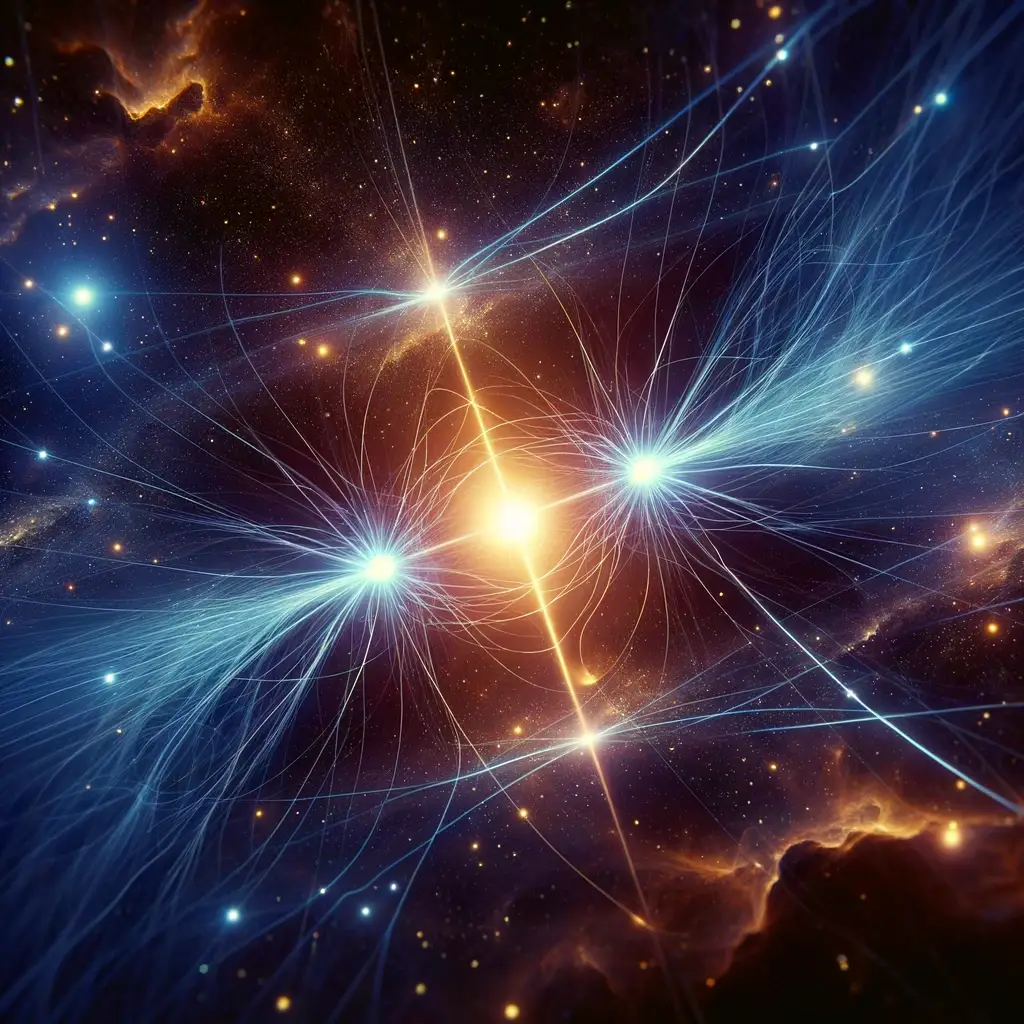
References
1. Zaiser, S.,
Rendler, T., Jakobi, I., Wolf, T., Lee, S.-Y., Wagner, S., Bergholm, V.,
Schulte-Herbrüggen, T., Neumann, P., & Wrachtrup, J. (2016). Enhancing
quantum sensing sensitivity by a quantum memory. Nature Communications, 7.
2. Tanaka, T.,
Knott, P., Matsuzaki, Y., Dooley, S., Yamaguchi, H., Munro, W., & Saito, S.
(2014). Proposed Robust Entanglement-Based Magnetic Field Sensor Beyond the
Standard Quantum Limit. Physical Review Letters, 115(17), 170801.
3. Ficek, Z.
(2010). Quantum entanglement and disentanglement of multi-atom systems.
Frontiers of Physics in China, 5, 26-81.
4. Osterloh, A.
(2008). Entanglement and its facets in condensed matter systems. arXiv: Quantum
Physics.
5. Healy, C.,
Hermanspahn, L., & Kruger, P. (2021). Photon upconversion in self-assembled
materials. Coordination Chemistry Reviews, 432, 213756.
6. D’Angelo, M.,
Zavatta, A., Parigi, V., & Bellini, M. (2006). Single-photon time-encoded
ebits: remote preparation and homodyne tomography characterization.
7. Cheng, Z.,
& O’Carroll, D. (2021). Photon Recycling in Semiconductor Thin Films and
Devices. Advanced Science.
8. Mozley, P.
(2005). Weaving Single Photon Imaging into New Drug Development. Molecular
Imaging and Biology, 7, 30-36.
9. Stelfox, M.,
Hudgins, J., & Sweet, M. (2016). A review of ghost gear entanglement
amongst marine mammals, reptiles and elasmobranchs. Marine pollution bulletin,
111(1-2), 6-17. Link
10. Feijó, J.,
& Moreno, N. (2004). Imaging plant cells by two-photon excitation.
Protoplasma, 223, 1-32.
11. van Wijk, R.,
Van Wijk, E., van Wietmarschen, H., van der Greef, J. (2014). Towards
whole-body ultra-weak photon counting and imaging with a focus on human beings:
a review. Journal of photochemistry and photobiology. B, Biology, 139, 39-46.
Link
These references provide a comprehensive overview of current research and advancements in the field of quantum communication, highlighting the contributions of leading scientists in the development of quantum technologies.


